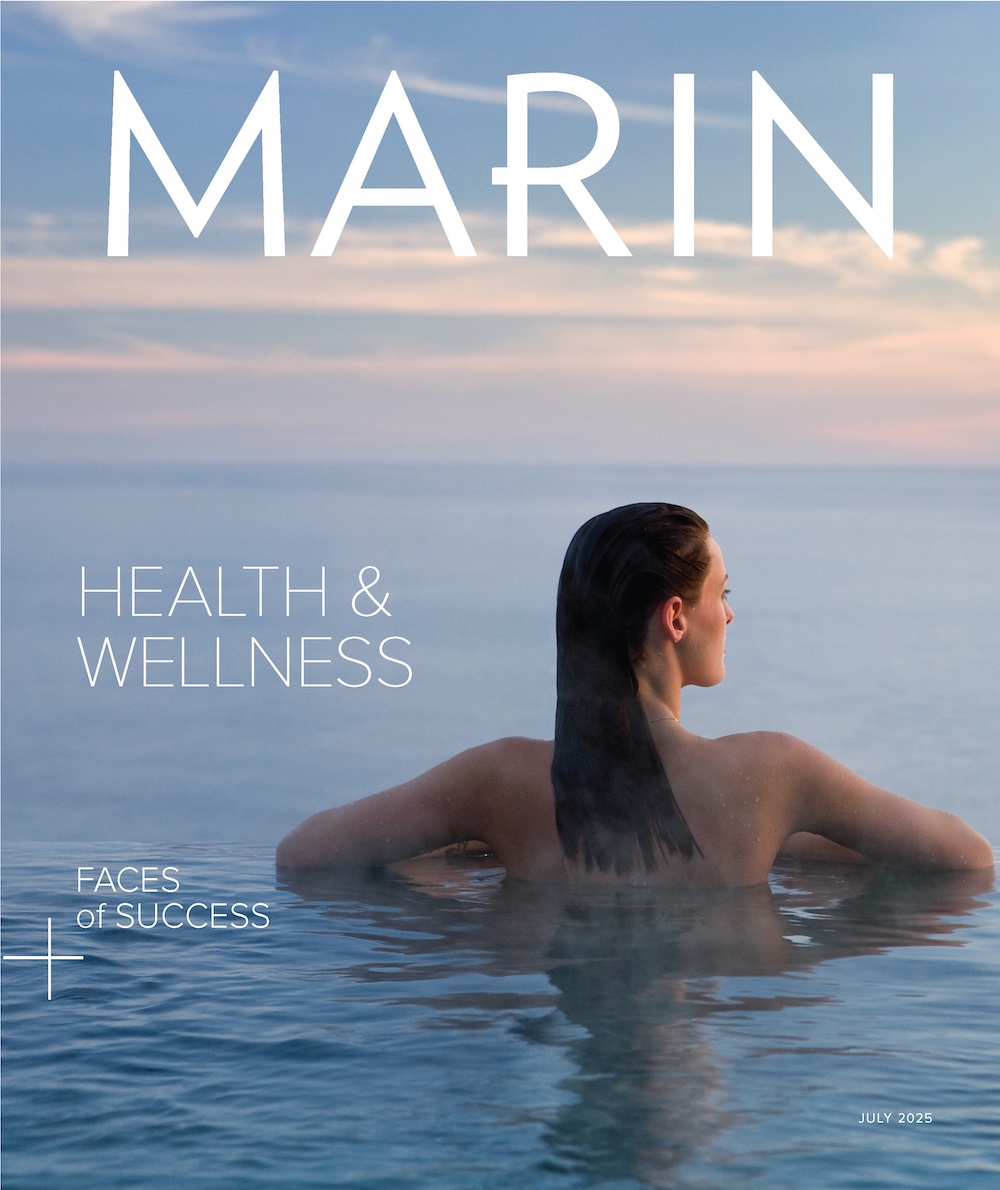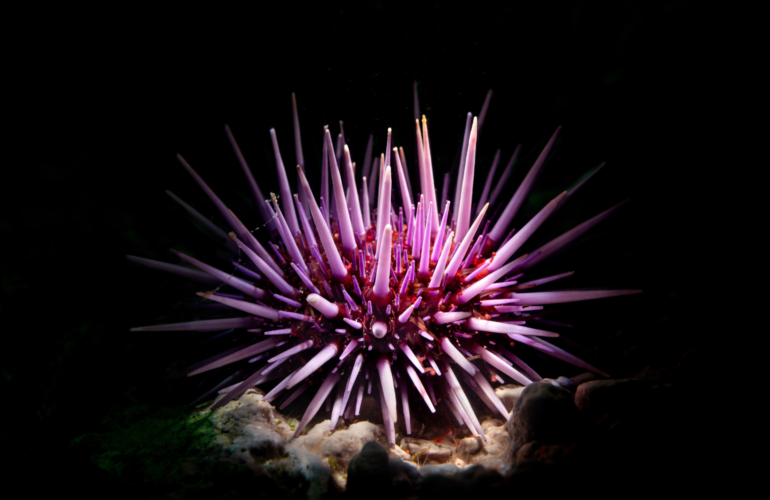It’s just past dawn and one of the lowest tides of the summer, just days before the solstice, when I look down from the balcony of my room at Little River Inn and notice the cars pulling into the parking lot at Van Damme Beach on the Mendocino Coast. Soon groups of people begin spreading out across the reefs, some venturing thigh-deep in the waves. They’re garbed in thick, elbow-length rubber gloves, fishing-style waders or wetsuits, and tall rubber boots, and many carry tools for prying — crowbars, paint scrapers, even spatulas. And everywhere there are buckets, big tall buckets, filling fast as the waders bend and straighten like bobbing birds. The catch: purple sea urchin, which have seen a 10,000-percent population explosion in waters warmed by climate change and which now blanket reefs up and down the West Coast from Mexico to Alaska. Without the starfish that once slowed their intrusion, particularly the sunflower sea star, the voracious spine-covered creatures maraud across the reefs, leaving behind moonscapes so desolate that they’ve earned the name “urchin barrens.”
If you’ve gone tide pooling recently in Bolinas, Point Reyes, Bodega, or anywhere else on the northern California coast, you’ve likely seen the damage for yourself. All but gone are the brilliant gold and fuchsia starfish and their all-important cousins, the sunflower sea stars, dead from a wasting disease linked with waters warmed by climate change. Gone too are 93 percent of the west coast’s once-lush kelp forests, and the abalone that rely on them — California’s abalone fisheries closed in 2017 and will remain closed until at least 2026, leaving divers unemployed and restaurant menus wanting. Purple sea urchins have even driven out their cousins, the red urchin that’s a staple of Japanese cuisine, taking them off the menu as well. “It all happened so fast — in 2008 it was great and by 2015 it was all gone. I get a sick feeling in the pit of my stomach when I go over one of these barrens and there’s just nothing there,” says Sheila Semans, Executive Director of the Noyo Center for Marine Science. “We’re a community that’s tied to the ocean, and it’s been devastating.”
But what if those same restaurants began serving purple urchin instead? And what if, thanks to the creativity of some of the north coast’s top chefs, discerning food-lovers discovered the flavorful potential of Strongylocentrotus purpuratus and the popularity spread, bringing the power of the market to clear the reefs? That’s the thought that inspired an unusual coalition of marine biologists, environmentalists, commercial divers, and chefs to create the first annual Urchin Festival, held in June 2022. The successful event, organized by the Mendocino Area Parks Association, or MendoParks, brought hundreds of visitors to the Mendocino coast to eat delicious urchin-centered meals while learning about the unfolding ecological disaster.
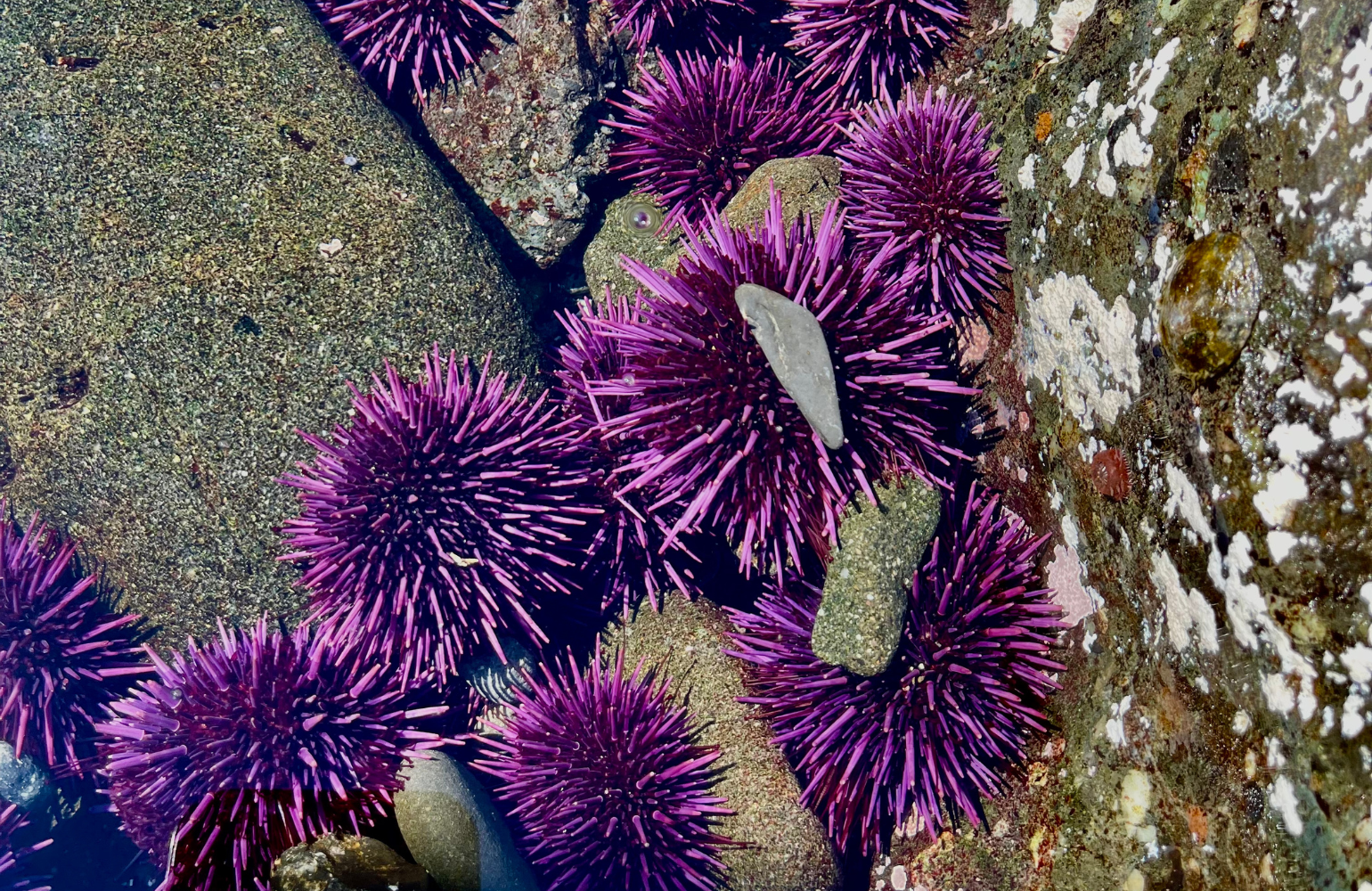
“We want people to understand what’s at stake,” says Cally Dym, fifth-generation owner of The Little River Inn, who is on the board of the Mendocino Area Parks Association. “People call them zombie urchins because even after they’ve eaten all the kelp, they can go dormant and live for 80 to 100 years. If the cockroaches are going to inherit the earth, it’s the urchins that are going to inherit the sea.”
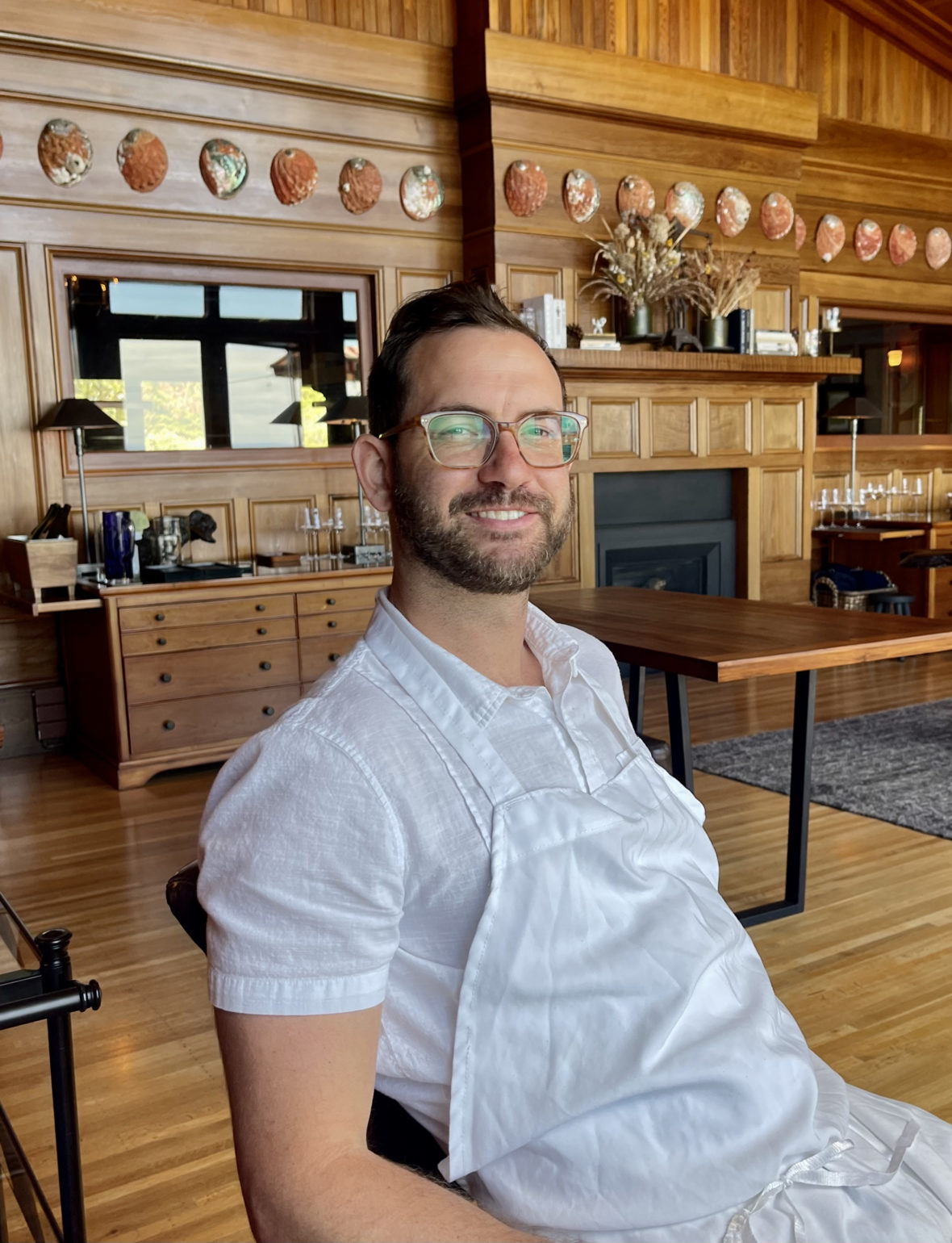
If I had any doubts about the potential of purple sea urchin to become the next seafood fad, they were put to rest sampling the urchin dishes prepared at UrchinFest, as locals call it, by Mendocino’s top chefs. At Harbor House in Elk, Matthew Kammerer demonstrates the commitment to hyper-local ingredients that earned him two Michelin stars in 2021 by incorporating purple urchin and its larger red urchin cousin into dishes like a Japanese-style savory egg custard, a risotto, a sauce topping grilled maitake mushrooms, and even candied as a topping for ice cream.
At nearby Elk Cove Inn, Executive Chef Victor Passalacqua incorporates purple urchin gathered on the inn’s own local beach into sauces topping rockfish, crab and butternut squash ravioli, and butter-fried brioche. Among the other leaders of the urchin dining movement are Jason Azevedo formerly of Little River Inn, Aaron Koseba formerly of SingleThread, and David Hopps of Izakaya Gama in Point Arena.

“We have this sustainable seafood abundance, and it’s something we should be harvesting,” Kammerer says. “It’s a tide pool in a bowl. No one else can make it, it’s all here.”
UrchinFest attendees also learned the basics of urchin preparation, watching demonstrators crack open the spiny shells and extract the delicate orange roe. None of this was news to the many groups of urchin foragers I found already loading buckets of urchin into the backs of their cars out in the parking lot. “People don’t know what they’re missing until they’ve tasted it, and then once you do you keep coming back for more,” says one enthusiastic young forager from San Jose, who preferred to remain anonymous, as her friends chimed in with tales of their uni initiation. “It’s intimidating at first, but once you learn how to do it you just keep looking for new recipes and trying new things.”
While hopes are high that enthusiastic foodies will become a force in urchin removal, the truth is that it will require work on a much larger scale to save California’s kelp forests and restore the reefs. To that end, a coalition of environmental organizations including Reef Check Worldwide, The Nature Conservancy, Noyo Center for Marine Science, and the Watermen’s Alliance, which represents commercial abalone and urchin divers, came up with an innovative plan to study the effects of large-scale urchin removal. “We got the idea, can we pay out-of-work divers to make a zone completely cleared of urchin and see what happens?” says Semans.
The results were impressive. In two years, divers removed an astonishing 50,000 pounds of urchin from two designated restoration sites. And within just two years, according to a report released in June by the Ocean Protection Council, the kelp forests in the cleared areas returned to 20 percent of their original density — while surrounding areas remained barren.
Given this knowledge, local divers – including many from Marin – are extending reef clearing efforts on an informal basis, coming together for informal weekend-long “urchin crushes” in which they bring in as many of the as they can, smashing them to save time and the effort of hauling them away.
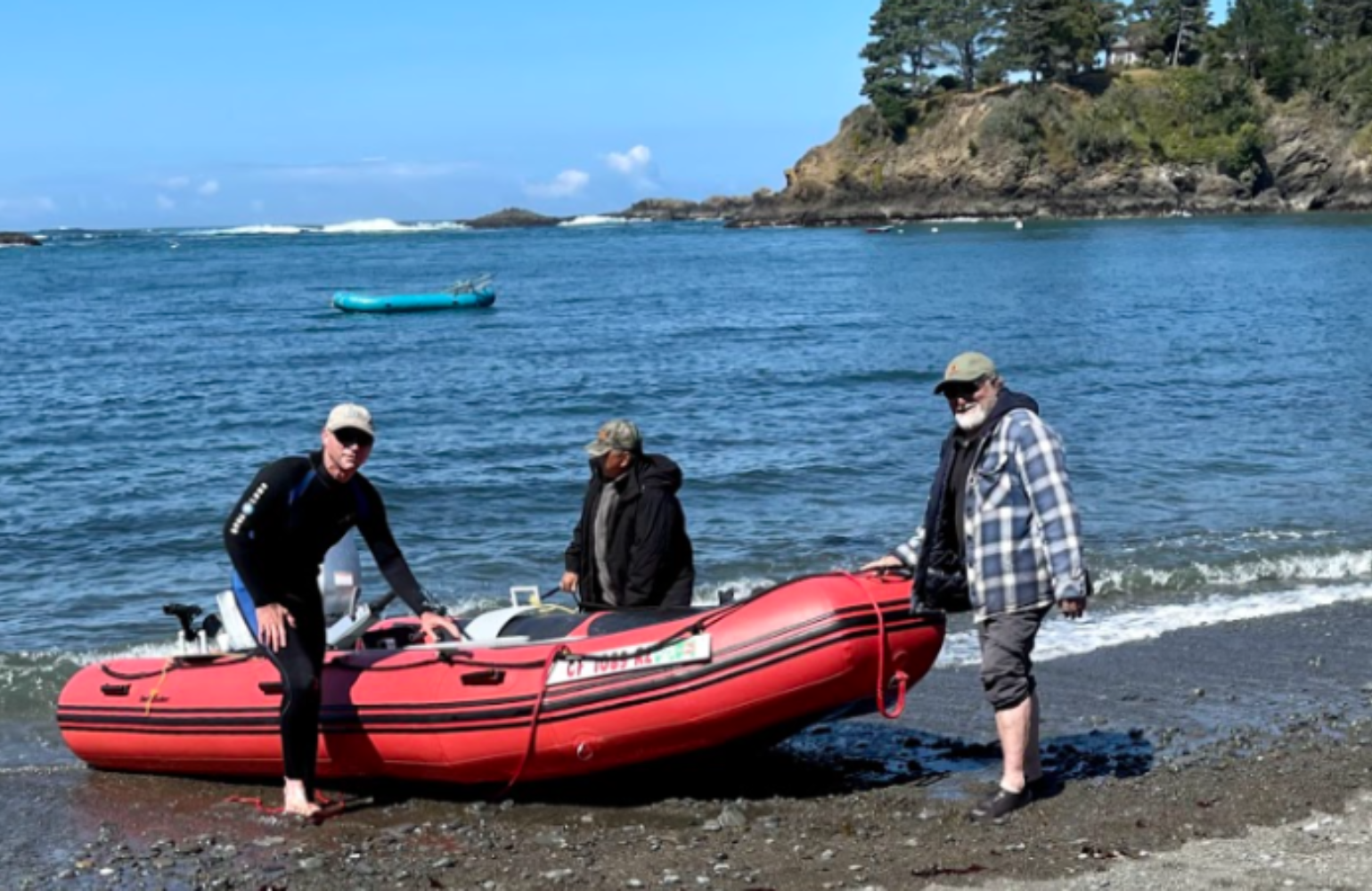
Formal efforts are also gaining momentum. Here in the Bay Area, the Greater Farallones Association (GFA) recently received $2.6 million in funding from federal and state agencies for kelp restoration and has embarked on a slew of projects in partnership with the Greater Farallones National Marine Sanctuary (GFNMS). Projects include outplanting new stands of bull kelp in Drake’s Bay and urchin removal along the Sonoma coast. “Other than ocean conditions, urchins are the most significant stressor preventing kelp forest growth,” Hohman says.
Nowhere is the kelp crisis made more vivid than in the film Sequoias of the Sea, a trailer for which was shown at UrchinFest. “How would we feel if we lost 96 percent of the big trees in the Sierras?” asks filmmaker Ana Blanco, introducing the film. “Because that is what we’re talking about with California’s kelp forests, and people need to understand that.”

Melanie Haiken is a writer, editor and web project manager based in the San Francisco Bay Area. She operates on two simple assumptions: Everyone has a story to tell. And a story well-told will always find an audience. Her work is characterized by exceptional clarity, depth and insight – no matter the topic covered. Haiken writes for AFAR, Forbes, Via, Yoga Journal and many other national magazines and websites. She has also created award-winning marketing and custom publishing materials and communications campaigns for clients like Adobe, Wells Fargo, Lane Bryant, Kaiser Permanente and Safeway.
